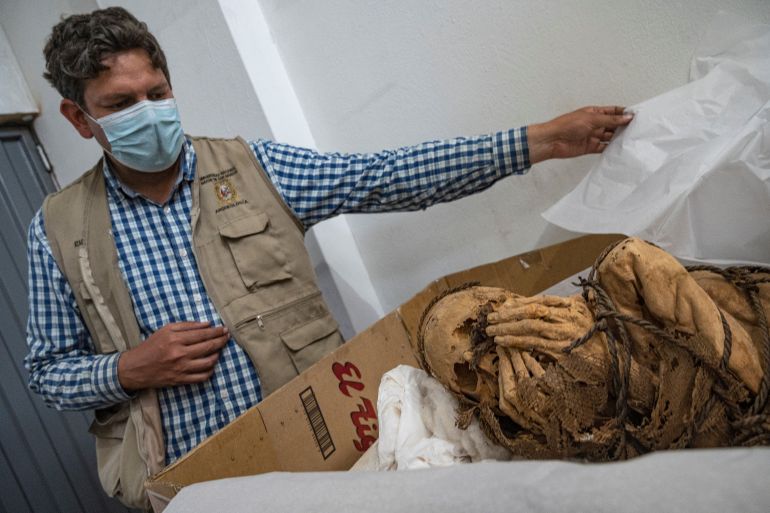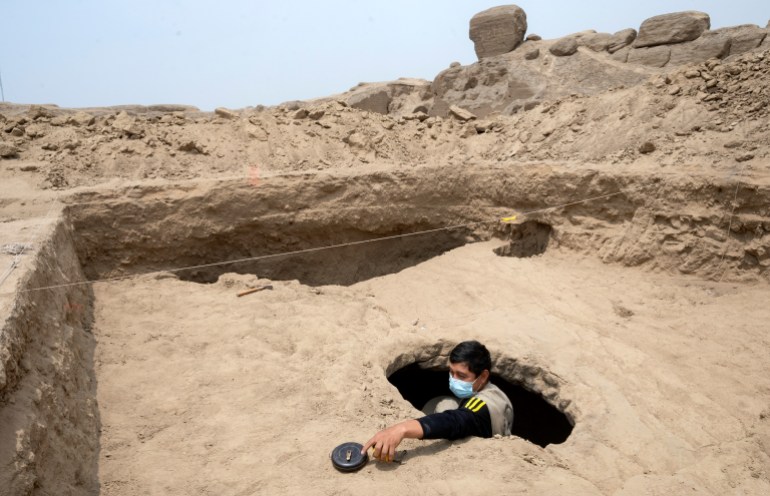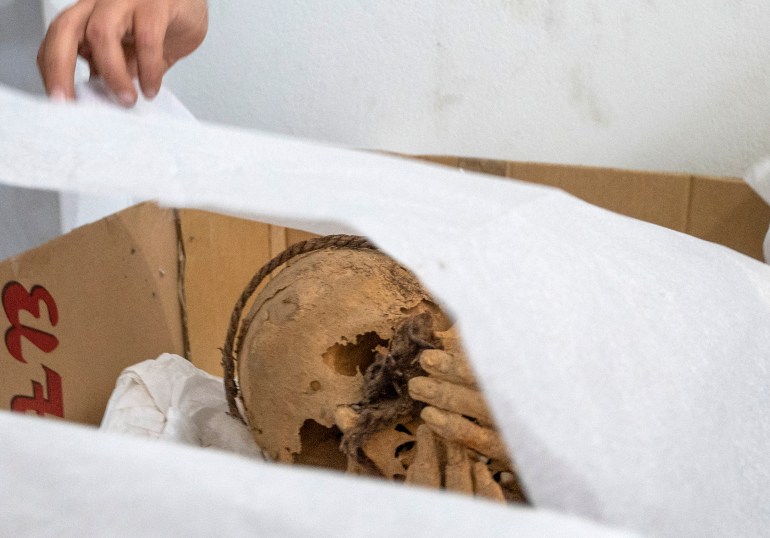Peru: Archaeologists say unearthed mummy could be 1,200 years old
Head of excavation project describes the discovery of the mummy, which was bound with rope, as ‘peculiar and unique’.

Archaeologists in Peru have said a mummy unearthed on the outskirts of the capital Lima could be between 800 and 1,200 years old.
The mummy was found in a burial chamber about three metres (10 feet) long and 1.4 metres (4.5 feet) deep in Cajamarquilla, which is about 24km (14.9 miles) east of Lima.
Keep reading
list of 4 itemsPeru opposition moves to impeach President Pedro Castillo
As Peru opens from pandemic, nearly all schools remain closed
Presumed President-elect Pedro Castillo faces challenges in Peru
It appears to be the remains of a man who was aged about 18 to 22 years old when he died. The body was discovered bound with a rope, with the hands covering the face.
Archaeologist Pieter Van Dalen, the head of the excavation project conducted by National Major San Marcos University, called the discovery “peculiar and unique”.

“The mummy would have been buried sometime between 800 and 1200 AD,” he said.
Scientists would use carbon dating to determine the exact age of the mummy.
Van Dalen said Cajamarquilla was an urban centre that could have been home to 10,000-20,000 people. It was built in approximately 200 BC and was occupied until about 1500 AD.
Also found inside the tomb was the skeleton of an Andean guinea pig and what archaeologists believe to be a dog. Traces of corn and other vegetables were found in the burial chamber. The discovery was first made public on Friday.

Peru is home to hundreds of archaeological sites from the diverse cultures that developed before and after the Inca Empire, which dominated the western regions of South America in the 15th and 16th centuries. The empire was conquered by the Spanish.
In October, archaeologists uncovered a mass grave that contained the intact remains of about 25 people in the Chan Chan archaeological site, which became a UNESCO World Heritage Site in 1986. Chan Chan was the capital of the Chimu empire, which reached its height in the 15th century before being conquered by the Incas.
In 2019, archaeologists found the bodies of 227 children believed to be killed in a child sacrifice ritual, near the present-day beachside tourist town Huanchaco.
The site, which was also believed to be from the Chimu era, was the largest mass grave of sacrificed children ever discovered in Peru.